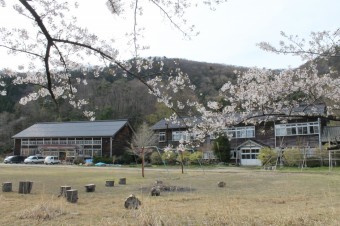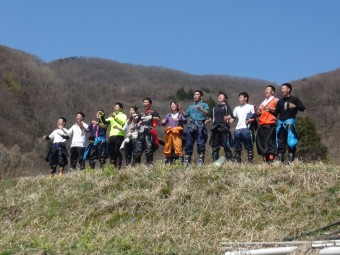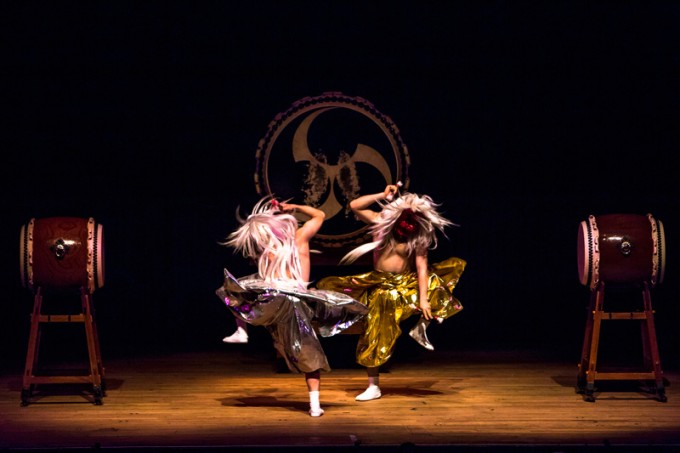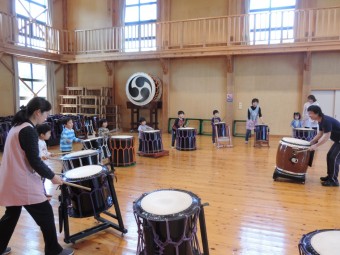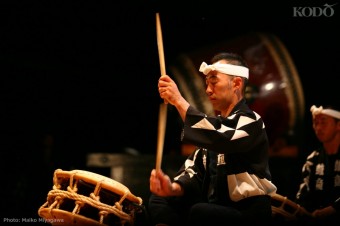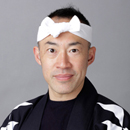“Kodo and Sado” by Tomohiro Mitome
July 1, 2014
This is Tomohiro Mitome, leader of taiko performing arts ensemble Kodo.
At the beginning of June, the rainy season set in around the Kanto area (near Tokyo) and I expected that it would reach us on Sado by mid-June. However, even though they have had rain on the mainland in Niigata, thanks to some westerlies we have mainly had just clouds and it’s been around 24 degrees on Sado most of the time. It’s is a little chilly in the morning and at night.
This month, I’m going to talk about the connection between Kodo and Sado.
Kodo Apprentice Centre (Kakinoura, Sado Island)
When you include the years of our antecedant group Ondekoza, about 40 years have passed since Kodo established its base on Sado Island. Before merging into one city (Sado City) a decade ago, the island was divided into ten municipalities. At first, our group was based in Hatano Town, then it moved to Mano Town, and finally we relocated to Ogi Town twenty-six years ago. The Kodo Apprentice Centre was located in Aikawa Town for six years, then in Mano Town for four years, and then it moved to its current home of Kakinoura nineteen years ago.
Most of the Kodo members now seen on stage are graduates from our Apprentice Centre in Kakinoura. Looking back, almost 200 young people to date have come to Sado Island to become Kodo apprentices. Some of them stayed on Sado after they finished the apprentice programme, and of course we, the Kodo members and staff, live on Sado, have families, and make our own connections in the community by living here and sending our children to school here.
If you want to know why our group chose Sado Island for its base, well, it’s a long story that requires some time to explain. If you are interested and can read Japanese, please read Kodo’s 30th anniversary publication Inochi Moyashite, Tatakeyo. – 30 Years of Kodo –. You will get to know a great deal about our group and learn about its roots. (Note: This book has Japanese text only with no English translation.)
Onidaiko from “Kodo One Earth Tour: Mystery”(Photo: Simon Jay Price)
On Sado, there are a lot of traditional performing arts and festivals. As a performing arts ensemble, sometimes we arrange Sado’s traditional performing arts to create stage pieces for our productions. At the many festivals on Sado, the locals perform from door-to-door and each house treats the performers to drinks and meals. Even if we just go along to observe the festivals, we are also invited into the houses to be treated to their hospitality. Since 1988 when Kodo moved to Kodo Village in Ogi we have always been invited to join in for the local festivals, so we take part, visit many houses, and enjoy their hospitality time and again.
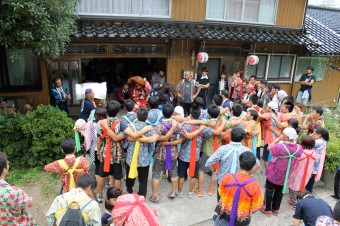
Iwakubi Festival on Sado Island
Naturally, we also want to show our appreciation to the people on Sado who always take care of us. So we hold our own “Kodo Village Festival” at our base, in the same spirit that each community has its own festival on Sado. It doesn’t have a fixed date or the history of other festivals, but we are happy to create this chance to show our appreciation to people in a personal way.
The Kodo Cultural Foundation has been working on various projects to activate local communities. One of these projects is the Sado Island Taiko Centre (Tatakokan). Its main program welcomes numerous school children for “Taiko Experience” workshops when they visit Sado Island on stay-over school trips. The Centre has become solidly rooted in the community as a leisure facility, too.
In July, Kodo will give a wide range of performances: “Kodo One Earth Tour: Mystery” in Japan, “DADAN” in Europe, and other solo & small-group performances in Japan and the USA. Sado Island is famous for its gold mine and toki (crested ibises), and we hope to be one of the things that comes to mind in association with Sado Island, too. With our performances, we are also doing our best to introduce & promote Sado Island to our audiences. We will work harder and harder to do this with more power, as our way of saying thank you to Sado Island.




